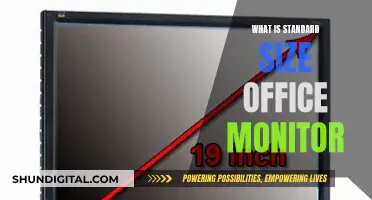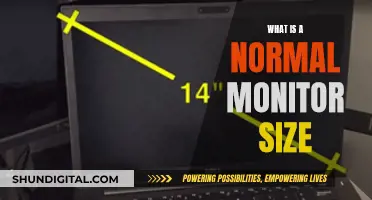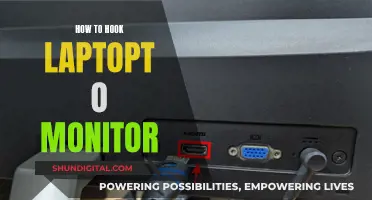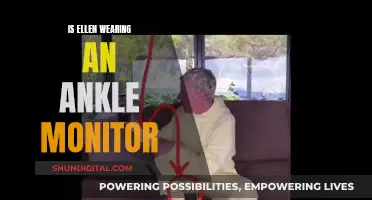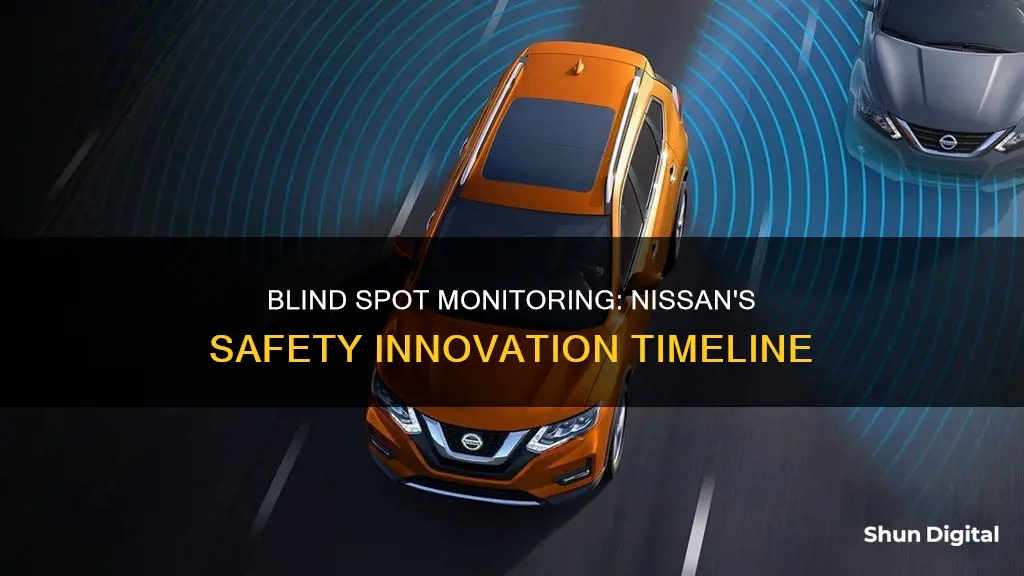
Blind Spot Warning (BSW) is a safety feature in some cars that helps drivers avoid collisions when changing lanes. It was introduced to some Nissan vehicles as early as 2011. The system uses side radar sensors and, in some models, a rear-mounted camera to detect vehicles in adjacent lanes. When a vehicle is detected in the blind spot area, the driver is notified with an indicator and a warning chime if the turn signal is activated. Nissan has issued a position statement on blind spot warning precautions, emphasising the importance of proper repair procedures to ensure the system's functionality and safety.
| Characteristics | Values |
|---|---|
| Company | Nissan |
| Technology | Blind Spot Warning (BSW) |
| Year Introduced | 2011 |
| Alert Types | Visual, Audible |
| Alert Locations | Side Door, Passenger Door, Display |
What You'll Learn
- Nissan issued a position statement on blind spot warning precautions in 2017
- The Nissan Blind Spot Warning system uses visual and audible indicators
- Nissan's BSW system was introduced to some vehicles as early as 2011
- The system does not function as a substitute for proper lane change procedures
- The Nissan Fuga/Infiniti M offered countersteering capabilities to avoid collisions in 2010

Nissan issued a position statement on blind spot warning precautions in 2017
In February 2017, Nissan issued a position statement on blind spot warning (BSW) precautions, expressing their concern about the proper repair of their vehicles after a collision, especially regarding safety-related systems. The statement addressed the repairability of a damaged rear bumper cover on vehicles equipped with BSW technology, which was introduced to some Nissan vehicles as early as 2011.
In the position statement, Nissan emphasised that the side radars responsible for triggering the BSW are located behind the rear bumper cover at both corners. As a result, the company does not support any repair, body filler application, or paint work on the rear bumper cover in the general area of the side radars. Instead, they recommend replacing the damaged bumper cover with a new Genuine Nissan bumper cover. Non-OEM bumper covers may vary in materials, specifications, and fitment, and have not been tested by Nissan for compatibility with the BSW system.
Nissan's service manuals include clear instructions, stating: "Do not attach a sticker (including transparent material), install an accessory or paint work near the side radar." Failure to adhere to these guidelines may lead to improper functioning of the BSW system, potentially causing safety risks for vehicle owners.
Nissan also clarified the limitations of its North America New Vehicle Limited Warranty and Limited Warranty on replacement parts. These warranties only apply to Genuine Nissan original equipment parts, and the company will not be responsible for any repair costs associated with the use of non-Genuine Nissan replacement parts.
The position statement provided specific instructions for repair considerations related to the BSW system, prioritising the safety and proper functioning of Nissan vehicles equipped with this technology.
Monitoring Controlled Drug Usage: Insurance Companies' Role and Reach
You may want to see also

The Nissan Blind Spot Warning system uses visual and audible indicators
The Nissan Blind Spot Warning (BSW) system is a safety feature designed to assist drivers in changing lanes and avoiding collisions. It was introduced to some Nissan vehicles as early as 2011. The system uses visual and audible indicators to alert the driver of vehicles in their blind spot area.
When the BSW system detects a vehicle in the adjacent lane approaching the rear of the driver's vehicle, it notifies the driver with an indicator light near the side mirror. This visual indicator provides a clear signal to the driver, allowing them to make informed decisions before changing lanes. The indicator light illuminates to draw the driver's attention to the presence of a vehicle in their blind spot.
If the driver activates the turn signal to change lanes while a vehicle is in the blind spot area, the system emits a chime and continuously flashes the indicator light to provide an enhanced warning. This combination of visual and audible alerts helps ensure that the driver is aware of the potential hazard and can take appropriate action. The chime and flashing light work together to reinforce the sense of urgency and help prevent collisions.
In some Nissan models, the BSW system utilizes radar sensors located on the sides of the rear bumper to detect vehicles in adjacent lanes. These radar sensors have a wide range of detection, scanning from the area near the side mirrors to about 10 feet behind the vehicle. Additionally, certain models may employ a rear-mounted camera to detect vehicles in the blind spot area. The use of radar sensors and/or cameras ensures that the system accurately identifies potential hazards.
The Nissan Blind Spot Warning system offers valuable assistance to drivers, but it is important to remember that it should not be solely relied upon. Drivers should always follow proper lane change procedures and maintain safe driving practices. While the system provides helpful alerts, it may not detect every object or vehicle in the vicinity. Therefore, drivers should remain vigilant and use the BSW system as a supplementary tool to enhance their overall situational awareness.
The i7 Question: Is It Worthy For 1080p?
You may want to see also

Nissan's BSW system was introduced to some vehicles as early as 2011
Nissan's Blind Spot Warning (BSW) system was introduced to some vehicles as early as 2011. The BSW system is part of Nissan's Safety Shield Technologies and is designed to assist the driver in avoiding a collision by detecting vehicles in the blind spot area when changing lanes. When the system detects a vehicle driving in an adjacent lane approaching the rear of the driver's vehicle, it notifies the driver with an indicator. If the driver activates the turn signal in this situation, the system alerts the driver with a chime and continuously flashes the indicator light to assist the driver in avoiding a collision.
The BSW system utilizes radar sensors located on the sides of the rear bumper to detect vehicles in adjacent detection zones. In some models, the system also uses a rear-mounted camera to detect vehicles in these zones. The side radars, which trigger the BSW, are located behind the rear bumper cover at both corners. This placement is important in the event of a rear-end collision, as any repair work, body filler application, or paint work on the rear bumper cover in this area can affect the proper functioning of the BSW system. Nissan recommends replacing the bumper cover with a new Genuine Nissan bumper cover to ensure compatibility with the BSW system.
The BSW system is not a substitute for proper lane change procedures, and it may not detect every vehicle or object in the vicinity. Drivers should always maintain safe driving practices and not rely solely on the BSW system. However, the system can provide valuable assistance to drivers by alerting them to potential hazards in their blind spots.
Nissan has continued to innovate and enhance its advanced driver-assistance systems, including the BSW system. The company's long-term vision, Nissan Ambition 2030, showcases its commitment to technology and safety. With features like the BSW system, Nissan strives to provide drivers with added confidence and safety on the road.
Apple Monitor Shopping: Where to Find the Best Deals
You may want to see also

The system does not function as a substitute for proper lane change procedures
Nissan has offered Blind Spot Warning (BSW) technology on some of its vehicles as early as 2011. This system is designed to assist drivers in avoiding collisions when changing lanes by detecting vehicles in the blind spot area. While this technology is a valuable safety feature, it is crucial to understand its limitations and not rely on it solely when changing lanes.
For instance, the system utilizes radar sensors located on the sides of the rear bumper to detect vehicles in adjacent lanes. However, these sensors have limitations in terms of range and field of view. Additionally, the system may not function properly if the sensors are obstructed or damaged, or if the vehicle is operating in certain environmental conditions such as heavy rain or snow, which can interfere with the sensors.
Furthermore, drivers should be aware that BSW may not always provide timely alerts. The system relies on processing data from the sensors, and there may be delays or errors in this process, especially in complex or fast-changing traffic situations. Thus, it is essential to use BSW as a supplementary tool to support safe driving practices rather than as the primary means of collision avoidance.
In conclusion, while Nissan's BSW system is a valuable safety feature, it should not be relied upon exclusively. Drivers must remain vigilant and follow proper lane change procedures at all times. By using BSW in conjunction with safe driving practices, drivers can benefit from an additional layer of protection on the road.
Asus Monitors: VESA Mount Compatibility and Your Options
You may want to see also

The Nissan Fuga/Infiniti M offered countersteering capabilities to avoid collisions in 2010
The Nissan Fuga, known as the Infiniti M in North America and Europe, is a mid-size luxury sedan produced by Nissan since 2004. The second generation of the car, which debuted in 2009, offered several safety features, including a Blind Spot Intervention System. This system used sensors to provide a visual warning in the side-view mirror, and if the car sensed movement towards an obstacle, it would also provide an audible warning and apply the opposite side brakes to guide the vehicle into the correct lane.
The 2010 Nissan Fuga/Infiniti M offered countersteering capabilities as part of its Blind Spot Intervention System. This system was designed to assist drivers in avoiding collisions when changing lanes. If the system detected a vehicle in the blind spot area of an adjacent lane, it would notify the driver with an indicator light near the side mirror. If the driver activated the turn signal, the system would alert the driver with a chime, and the indicator light would flash continuously. In addition, the system could also apply the brakes on the opposite side of the vehicle to guide it back into the correct lane, effectively providing countersteering capabilities to avoid potential collisions.
The Blind Spot Intervention System was one of several advanced driver-assistance features offered by Nissan at the time. These features were designed to assist drivers in avoiding collisions and making driving safer. Another feature was the Lane Departure Prevention system, which used a small camera to monitor the vehicle's position within its lane. If the system detected that the vehicle was drifting out of its lane, it would lightly apply the brakes on one side to guide the car back into its lane.
The 2010 Fuga/Infiniti M also introduced Nissan's first in-house-developed electric hybrid technology. The hybrid model, known as the Fuga Hybrid or Infiniti M35h, offered improved fuel efficiency while still providing ample power. The hybrid system combined a 3.5-litre VQ35HR engine with an electric motor, resulting in a net power output of 360 horsepower. The electric motor was powered by a small, 1.4 kWh lithium-ion battery, which was expected to have a service life of 10 years.
In terms of design, the second-generation Fuga/Infiniti M featured a more organic look, reminiscent of the "coke bottle styling" of the 1960s and 1970s Nissan Cedric and Gloria models. The car was designed with a muscular theme to appeal to American buyers, and its exterior dimensions were similar to those of its predecessor, with a length of 4,945 mm, a width of 1,845 mm, and a height of 1,515 mm. The interior of the car offered plush and comfortable seats, along with premium semi-aniline leather, soft-touch trim, and woodgrain and chrome detailing.
Monitoring Hotspot Usage: A Guide for Samsung Note 8 Users
You may want to see also
Frequently asked questions
Nissan introduced blind spot monitoring, known as Blind Spot Warning (BSW), as early as 2011.
When a vehicle is detected in the blind spot area, an indicator appears in the driver's or passenger's side door and on the display. If the driver puts on the turn signal, the indicator flashes with a warning chime.
A blind spot monitor is a vehicle-based sensor device that detects other vehicles located to the driver's side and rear. Warnings can be visual, audible, vibrating, or tactile.
Blind spot monitoring was first offered by Volvo in 2003, followed by Mazda in 2008, and Ford in 2009.


